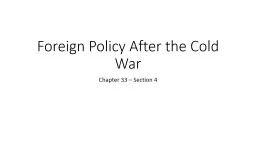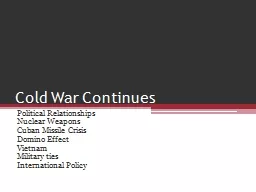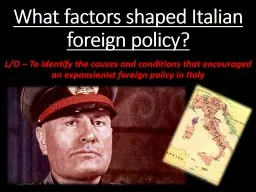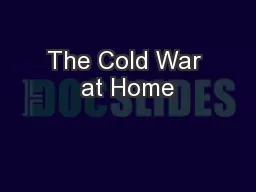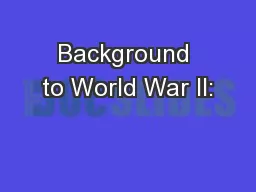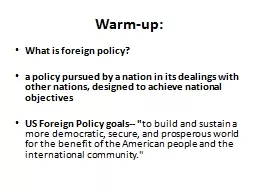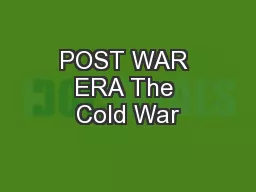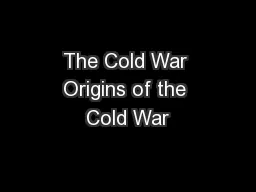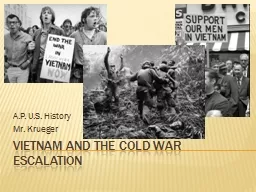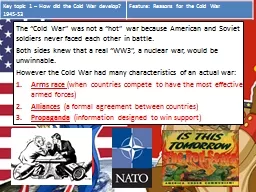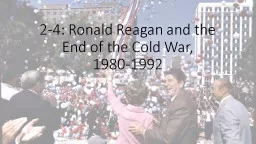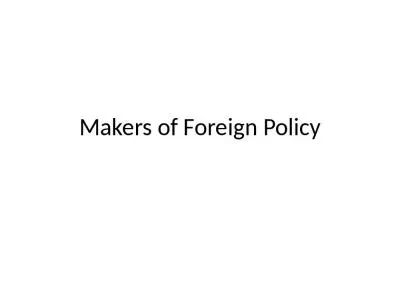PPT-Foreign Policy After the Cold War
Author : calandra-battersby | Published Date : 2019-01-29
Chapter 33 Section 4 In 1980 During his campaign Reagan talked very sternly about how he would toughen the United States attitude toward the Soviet Union and Communism
Presentation Embed Code
Download Presentation
Download Presentation The PPT/PDF document "Foreign Policy After the Cold War" is the property of its rightful owner. Permission is granted to download and print the materials on this website for personal, non-commercial use only, and to display it on your personal computer provided you do not modify the materials and that you retain all copyright notices contained in the materials. By downloading content from our website, you accept the terms of this agreement.
Foreign Policy After the Cold War: Transcript
Download Rules Of Document
"Foreign Policy After the Cold War"The content belongs to its owner. You may download and print it for personal use, without modification, and keep all copyright notices. By downloading, you agree to these terms.
Related Documents

